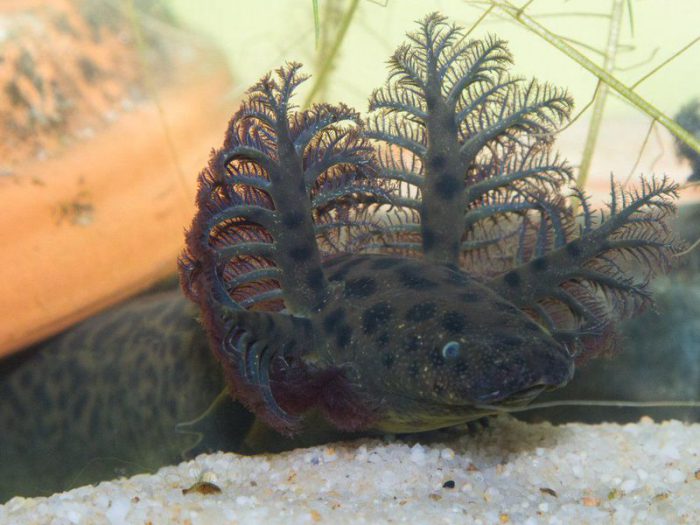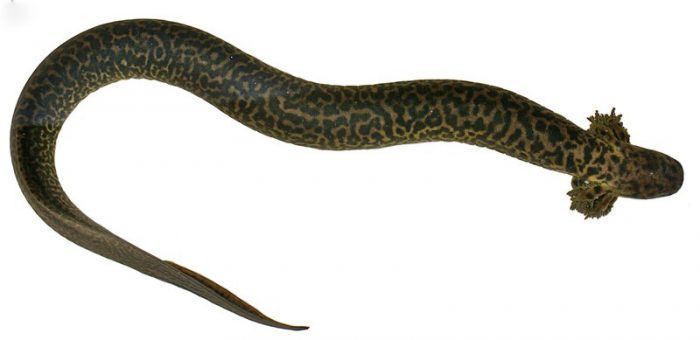In mythology, sirens were dangerous creatures—sometimes bird-like, sometimes half-fish—whose beautiful music lulled sailors to sleep and caused them to shipwreck on rocky coasts.
In real-life biology, sirens aren't anywhere near this dangerous. They're actually just a type of fully-aquatic salamander with feathery gills around their heads and two legs (instead of the usual four). But as the case of the reticulated siren proves, they can often be almost as difficult to find.
For decades, stories were told of a large salamander that lived in swamps in Alabama and Florida. But there was no solid evidence to support it. Only legend. Now scientists have stepped in and established once and for all.
The reticulated siren is real. (And no, it won't sing you into a doomed slumber!)
Unusually large find

Like many aquatic amphibians, the reticulated siren has feathery gills around its head for breathing underwater. (David Steen/University of Auburn)
As we've covered earlier this month, there is no shortage of animal and plant species on this Earth for us to discover. But all the same, discoveries like the reticulated siren are rare. Why?
Because this animal is quite large. It measures about 60 cm (two feet) long. And it also lives very close to the surface. In other words, most newly-discovered creatures have escaped detection because they are very small and/or live in remote areas. The reticulated siren is one of the largest North American vertebrates to be newly catalogued in 100 years.
Of course, sometimes scientists are maybe just a bit too busy. Locals in Alabama and Florida have known about this creature for a while and even had a name for it in some places: the leopard eel. So what we're really celebrating is that the reticulated siren has finally been formally described and catalogued.
"We could wait another ten, twenty, thirty years to figure out all the details about the species, but we felt it was important to document it," biologist at Auburn University David Steen told the Scientific American. We couldn't agree more.
Sound the alert—this siren has finally arrived!
 Meet the Siren reticulate, or reticulated siren. (Sean P. Graham, Richard Kline, David A. Steen, Crystal Kelehear)
Meet the Siren reticulate, or reticulated siren. (Sean P. Graham, Richard Kline, David A. Steen, Crystal Kelehear)









